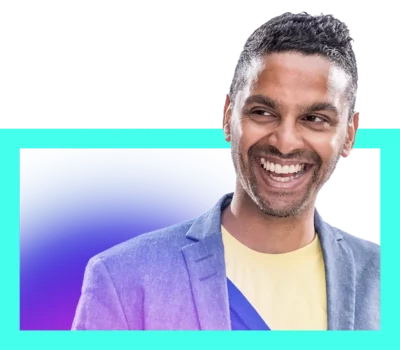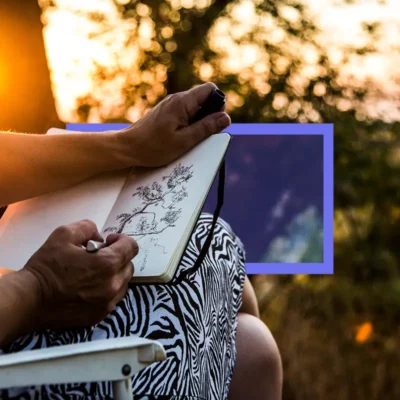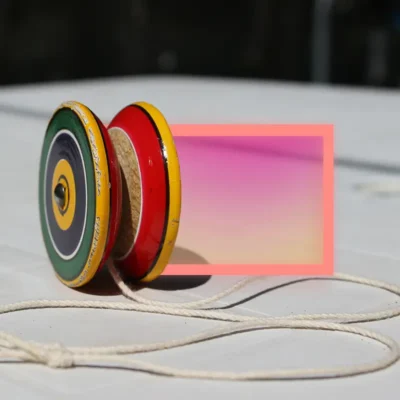Finding a way in
If in our own lives, we can use a trick of puncturing worry and tension with humanity and humur, then we too can start answering some of life’s most important questions.
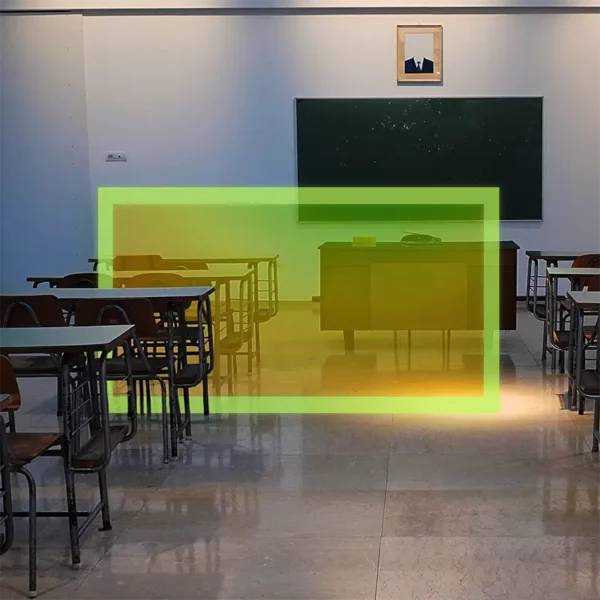
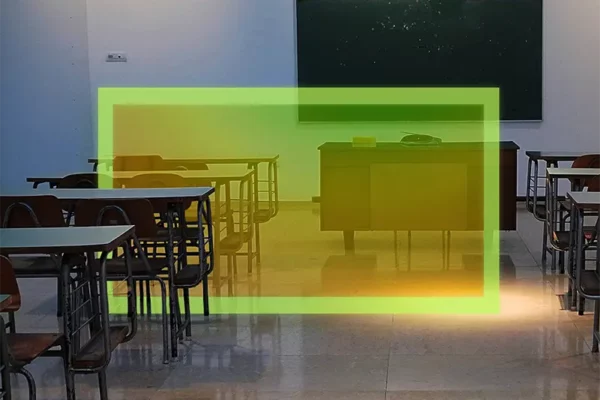
Table of Contents:
Transcript:
Finding a way in
SINÉAD BURKE: As I pursue a degree in education, a student at my college turns to me and asks, “How are you going to do it? How are you going to be a teacher? The kids are going to be bigger than you. How are you going to control them?”
Questions like these never stop.
Will you be able to reach the light switches?
Can you even hang artwork on walls?
If not, will it lessen the students’ experience?
It is the beginning of a new reality. As I work towards my dream, parents, other teachers, and staff will constantly question my ability to be an educator. Of course, being a little person at the top of the classroom is a very curious thing for my students.
ROHAN GUNATILLAKE: Sinéad Burke is a devoted teacher and an activist, on a mission to make the fashion and design industries welcoming of everyone, regardless of their physical differences from those in the majority. Today, Sinéad’s Meditative Story is above anything else, a human one. It’s a story of what it’s like to look different to everyone else, and how years of exclusion have taught her how to teach inclusiveness to our children.
In this series, we blend intimate stories with mindfulness prompts to help you find a moment of calm and meaning at any time of the day. I’m Rohan, and I’ll be your guide on this very special episode of Meditative Story. From time to time, we’ll pause Sinéad’s story ever so briefly for me to come in with a thought to deepen your experience as you listen. To feel the effects, just stay in the story. Stay with Sinéad.
The body relaxed. The body breathing. Your senses open. Your mind open. Meeting the world.
BURKE: I viscerally remember my first day of school.
I practice my introduction. I feel my tongue roll over the pronunciation, all the bumps and hurdles of that word. Fourteen letters: achondroplasia. I don’t really understand the word. I know that they won’t either. But my parents tell me that this word describes me, that it would help other children understand why the body I live in is different than theirs.
I walk into this alien space. The toxic fragrance of the freshly painted walls emanates into the room and the surfaces are gleaming, offering a reflection that only happens once a year. Twenty pairs of eyes stare at me. A lady with a booming voice announces that my name is Sinéad and I am joining the class.
I take a deep breath and say: “Hi, my name is Sinéad. I have achondroplasia, that’s a-c-h-o-n-d-r-o-p-l-a-s-i-a. It means that I’m a little person. My arms and legs are smaller than yours but I’m a person just like you. I’m 4 years old.”
During these first few hours, my love for learning ignites, never to go away. My classroom is this incredible, ever-changing environment where anything is possible. I can be anyone I want to be. I can throw on a Prince Charming costume and take on that role, or I can become the captain of a game in the PE hall and lead others. In this classroom, there are no limits. I am free to reimagine the world and make each day different than the one before.
I go home that day, which just so happens to be my fourth birthday, and I tell my parents I want to be a teacher. I am confident as I say it. Proud. My parents only ever show enormous confidence in me. No matter what I choose to pursue, I know they will back me and push me forward. It never dawns on me in those early years that I need anything more than their belief in me. Their unwavering support makes the whole world feel accessible to me. Looking back, I am sure they were filled with fear, not because I wasn’t capable, but because the world might not let me have this.
Growing up, I’m the eldest of five children. I have three sisters and one brother, all of whom are of average height. My Dad is a little person just like me. My Mam is average height. My parents didn’t have the access or the luxury to go to tertiary education – to go to college – but want that for their children. They spend Thursday evenings at home doing spelling tests with us, fostering our love of learning. My parents can see that education is this tool to change your life. It erases your ignorance or your biases.
I am ignored or not considered nearly everywhere. I am ruled out as different. As I stroll down the street, I can hear strangers asking questions: Why is she so small? Does she wish that her life could be different? Can she drive?
Teenagers and young adults stare, taunt, and take photographs of me. It’s hurtful. I am a vehicle for internet virality. My body is objectified, without my consent, for their use and entertainment. They don’t wish to communicate with me, but put forward a narrative of who I am and what I get to be, each rooted in their own biases. I feel “other.”
Teaching and being in a classroom teaches me the universality of feeling as an “other.” My students are not physically disabled, and people do not harass them in the street, but they are made to feel different, excluded from community and education based on a decision of what a curriculum should be and the narrow ways of measuring intelligence – and really, the worth of a person.
It’s not until I experience these moments, forced to be the subject of other people’s ignorance, do I realize that others see my challenge as a weakness. They don’t yet know that my disability and my condition and how I experience the world is what makes me a great teacher, a wonderful person – and more importantly, Sinéad.
GUNATILLAKE: Sinéad’s complete ownership of her whole self is one of the great sources of her power. Are there any aspects of yourself that you shy away from? What would it be like to welcome those aspects – to celebrate them even?
BURKE: As I pursue a degree in education, a student at my college turns to me and asks, “How are you going to do it? How are you going to be a teacher? The kids are going to be bigger than you. How are you going to control them?”
Questions like these never stop.
Will you be able to reach the light switches?
Can you even hang artwork on walls?
If not, will it lessen the students’ experience?
It is the beginning of a new reality. As I work towards my dream, parents, other teachers, and staff will constantly question my ability to be an educator. What they don’t realize is that being a little person shapes how I see the world, and how that view hones what will make me a great teacher. I know compassion because it is instilled in me and I know how to gift it to my students. I’m a natural problem-solver. All this is what I give to my students
Of course, being a little person at the top of the classroom is a very curious thing for my students. From the very moment I step into that classroom a hand goes up. “Why are you so small?”
It’s a good question. As adults, we’re likely not to ask out of fear of offending. And in not finding a way to ask, we don’t see how we are giving ignorance a chance to root itself.
“Well, why are you so big?” I ask back.
“I don’t know,” the child shrugs. “I was just born like this.”
“Well, so was I,” I say.
And immediately, my genetic makeup is explained in a way they can understand.
My classroom is designed in a u-shape, the children sit in a linear fashion, almost snaking around the room. It’s so that I can see each of them, be at eye-level with each child, symbolizing that I am present, and ready to listen, and to encourage. Before the students arrive, I walk around every desk, my hand skimming the surface of the table. I imagine the student who will sit there and predict what the year might hold for each of us, together. So many things in the classroom are out of my reach, even the blackboard. I live in a world that isn’t designed for me.
My school is an old building in the heart of Dublin. It is in one of the city’s poorest communities. I teach sixth class, the highest grade in Ireland’s elementary school system. My classroom is on the top floor, filled with 26 boys. I am surrounded by eleven and twelve years old. Just imagine.
Two boys to a table. This set-up lets everyone see at eye level. It transforms the definition of power I have with my students.
When it comes time to teach the children about types of homes and basic architecture, the curriculum doesn’t recognize that my students do not live in bungalows, cottages, terraced housing, and semi-detached houses with large front and back gardens. The curriculum simply doesn’t speak to living in flats, temporary housing, government-subsidized accommodations. The entire reality for many of my students is simply omitted from the curriculum provided to me to teach them. They don’t feel part of the community. How can they? Their voices and experiences are excluded. Full stop.
But I always look for new ways in. This is clear for plenty of the subjects, but most especially math. The boys see no use for multiplication and division, it is explained with complicated language and a methodology that has changed since their parents were in school. All examples are abstract, they provide no meaning and no purpose. I rethink the lessons. I recalibrate. The next day, I take their local take-out menu, and tell them the story of Snow White and the Seven Dwarfs.
They look at me with heads tilted as I speak, wondering if I know the correlation between that story and well… me. I do. I tell them that Snow White has gone on a last-minute date with Prince Charming, but the seven dwarfs are hungry and want food. Snow White needs our help. She has left a note that says we have €60 to spend on dinner and lists the seven dwarves’ dietary requirements: one is celiac, one is vegetarian, another is vegan, one doesn’t eat red meat, and one is a pescatarian.
As I scan the classroom, I see students who are more academically inclined, and this gives me time to sit with those who are really struggling with the more basic principles.
I sit with Lucas, a young boy who finds maths very difficult. Let’s keep it simple, I suggest. We should just figure out how much the chips are.
“Easy,” he says. “If one bag of chips is €2.50, two bags is a fiver!”
“YES,” I exclaim so loudly that he jumps. “That’s right.”
I write down: €2.50 x 2 = €5.00. He looks at me strangely.
“What are you doing?” he asks.
“Maths. That’s the multiplication that you just did.”
“Maths? No, I did dinner.”
Lucas is being entirely sincere. In this moment, he can not grapple with the idea that what he does at home has any relevance to what we learn at school. All throughout his education, he is forced to code-switch between the place where he spends eight hours of his day and his own reality.
GUNATILLAKE: It must be so confusing for Lucas, unable to connect the different parts of his life together. Have you ever felt like that? I know I have. As he sits in class, tense and confused, let’s sit with him. Breathe with him.
BURKE: Because I cannot reach the blackboard in the classroom, I use PowerPoint presentations through a laptop and projector. It used to take 90 seconds to close one PowerPoint presentation to open the other, and 90 seconds is just the amount of time that twelve-year-old boys need to cause chaos in the classroom.
For that 90 seconds, I need something as a distractor but these boys are hip and cool, so the idea of playing a clapping game or giving them a gold star as a reward isn’t an option. Instead, I hook up my iTunes account to my laptop and for those 90 seconds somebody in the class gets to listen to a song that they like. For about three weeks, we listen to Calvin Harris and Ed Sheeran because everybody is trying to out-perform their own coolness.
About six weeks into this, one of my most challenging boys comes up to me and says, “Do you have that song ‘Sound of Silence’ by Simon and Garfunkel?”
I tell him no, but that I can get it for him.
“Do you mind me asking, how do you know that song?” I ask him.
“Oh,” he says. “It’s my dad’s favorite song.”
Three days later, he happens to be awarded ‘the jukebox’, as we call it in class and his song begins to play. Some of the boys protest because it isn’t the liveliest of melodies but he shushes them and says, “This is my dad’s favorite song and I want to listen to it.”
This begins a steady stream of songs by U2 and Sinead O’Connor as the kids go home to ask their parents about their favorite songs. The jukebox becomes a bridge, especially for the parents who don’t have the academic literacy to support their child through helping with homework. It is this meaningful way for parents and children to connect and communicate in school, and it’s all because I am not able to reach the blackboard.
I’m 29 years old now. I still struggle with insecurities. I suppose I will for as long as I live.
When I was 11 years old, I was offered limb lengthening surgery. In an act of bravery, my parents told me that it was my decision to make. They would be there for me if I had any questions, but they wouldn’t attempt to change my mind. The surgery requires an operation whereby your bones are deliberately fractured and, over the course of a year, the break is stretched to leave space for new marrow and bone to grow.
I needed to think. Why would I be having the surgery? Would it help me navigate an inaccessible world? Would it mean less jokes and taunts? Could I exist in the world just as me? Could I be just Sinéad?
Six inches in height would help me to reach some things. Maybe I could turn on the light switch a little easier or maybe reach the next shelf in the library. I might make friends easier. It might help people to accept me. Yet, I would skew closer to society’s definition of ‘normal.’ I would be less of a little person. I would be less disabled.
I decided that I didn’t want to change me. I didn’t want to change for the world, I wanted the world to acknowledge me.
GUNATILLAKE: Listening to Sinéad’s words and her heart, we acknowledge her, we see her. And there are so many people in the world around us who don’t feel seen, don’t feel welcomed because of the artificial ideas of what constitutes being normal. Feeling that suffering, make the intention to acknowledge the people you see for who they are, not who they aren’t.
BURKE: I have never spoken to my parents about what they thought about my choice but I see the power of them giving me that decision to make for myself, particularly for my dad, because he’s a little person, too. I think letting me have a voice really impacts how I view the world, particularly how I work with children and young people because their voice is as important, if not more so, than mine.
Being a little person allows me to be an excellent teacher, one who understands the power of differences and the importance of empathy and inclusion. Still, loving myself and my body is a choice, a difficult one.
I’ve lived my whole life, in many ways, not seeing someone who looks like me reflected on the walls, on pages, or in the parts of institutions. Just for a second, think about the spaces you have seen someone with my body occupy. “Games of Thrones”? “Harry Potter”? Great, but where are the women, where are the queer and black members of my community?
Our bodies are not painted as beautiful on the walls of a national gallery and our voices are not narrating the stories of great literature. I don’t know what’s possible for me since I haven’t seen a reflection of myself which shows me what’s possible. Neither have the students that I teach and that is the gift I give them.
I know this: one person can be the vehicle by which somebody else can feel seen and known. That one person can make all the difference in what the child sees as possible. Finding the moments in which someone strives to achieve, even if it’s only marginally and celebrating that, all the while recognizing their unique value as a person, is the gift I received from my parents. Being a loved child isn’t something that I chose, it’s something that I was gifted and born into.
Even with all the support, the comments made by other people who do not take the time to really see me bleed into my internal monologue sometimes. But the love I received as a child makes me ask the harder questions: How can I give people their best start at life? What do other people think is possible for their dreams based on the world they see around them?
My response is always the same. Turn everything that excludes the person in front of you into something that includes them by finding a way “in.”
As a child, in my darkest moments, when people were cruel, my Mam would ask me: “Which person would you like to be? You, who didn’t choose to be disabled but chooses to be kind? Or them, who chooses to be cruel?”
I choose me.
Every time.
Rohan’s closing meditation
GUNATILLAKE: Inclusion has been a growing aspect of my own work life in recent years, but it has been a part of my meditation life for many more. So what I’d like to do together is a practice about inclusion.
And starting by just breathing. Letting the body be comfortable. Face soft. Shoulders soft. Belly soft. And breathing. The in-breath inviting brightness and interest. Letting the out-breath soften everything. Where can you most notice the breath in the body? Maybe it’s in the belly, or in the chest, or around the nose. Take a little time to really land on where it is
And if you can’t quite feel it, and it’s safe to do, place your hand on your belly and feel into the sensations of the breath making your hand move in and out, feeling the breath, in the part of the body where you feel it. And when your mind wanders away, just dropping it back into the breath.
Many years ago a meditation teacher of mine taught me a lesson I think about all the time: “When we give one thing, one part of our experience more attention than anything else, we make it special. And when we make one thing special, everything else becomes less special. So Rohan, your job is to make everything special.”
So let’s do that, let’s make everything special.
Up till now, by sensing the breath in only one part of the body, we’ve made that part special. But Sinéad’s invitation was that of inclusion, so let’s include the whole body. Instead of noticing the breath in one part of the body, try to sense it in the whole body. We call it whole body breathing, including every single part of the body, every cell taking part.
The body breathing in. The body breathing out.
And if the mind closes in, either into one particular part or into distractions, then opening out again, including the whole body, knowing it as it breathes. And never being satisfied when it comes to inclusion. Opening out further.
So far we’ve made the body special, the physical aspect of experience. So let’s include everything else while still holding the whole body in our awareness. Including sound, including sight, including smell and taste, including thoughts.
Everything held. Everything included. Nothing considered to be more special than anything else. Everything included. Everything special.
Thank you.
